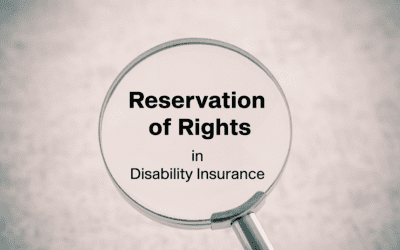Fibromyalgia is a common yet often misunderstood medical condition that affects approximately four million Americans. Fibromyalgia can be particularly complex within the context of disability benefits. If you are unable to work due to fibromyalgia symptoms, you should be familiar with the disease and how it is assessed in relation to disability benefits.
Table of Contents
What Is Fibromyalgia?
Fibromyalgia is a physical condition that causes widespread muscle pain throughout the body, as well as fatigue, headaches, sleep problems, emotional and mental distress, and difficulty thinking and concentrating (a.k.a. “fibro fog”). Irritable bowel syndrome can also coincide with fibromyalgia. While fibromyalgia can affect individuals of all ages, it is more common amongst women and is most commonly diagnosed during middle age.
Doctors can confirm the presence of fibromyalgia via objective testing measures – more specifically – the trigger point test. This test can identify up to 18 tender points associated with fibromyalgia that produce localized pain when the doctor presses on the area with their finger. If 11 out of those 18 tender points elicit pain or tenderness, than a diagnosis of fibromyalgia is proper.
Can I Get Long-Term Disability Benefits for Fibromyalgia?
Yes, it is possible to qualify for long-term disability benefits due to fibromyalgia symptoms. In fact, it is common for severe pain, fatigue, and/or fibro fog to prevent an individual with fibromyalgia from working on a consistent basis. You should submit a claim for long-term disability benefits if you are unable to perform the duties of your job due to any combination of those symptoms. However, it can be an uphill battle proving that your fibromyalgia symptoms prevent you from performing your job.
Why Is It Difficult to Prove Disability Due to Fibromyalgia?
Most disability insurers are skeptical of long-term disability claims filed by individuals who suffer from fibromyalgia due to the subjective nature of the disease. More specifically, insurers will typically deny payment of fibromyalgia-based long-term disability claims on the grounds that the claimant failed to provide an objective basis for their inability to work. While tender points are indicative of the presence of fibromyalgia, the severity of symptoms (namely pain, fatigue, and fibro fog) is based almost entirely on the patient’s self-reports. Thus, the “invisible” nature of fibromyalgia makes the claimant’s credibility a key factor of the disability claim.
Insurers will also commonly deny fibromyalgia-based disability claims based on a reviewing physician’s opinion that even if fibromyalgia symptoms are present, they do not rise to the level of preventing the claimant from performing their job. There is also a minority of physicians who erroneously believe that fibromyalgia can never be disabling.
Thankfully, many federal courts acknowledge the potentially disabling nature of fibromyalgia and can award long-term disability benefits accordingly. In Kennedy v. Eli Lilly & Co., 856 F.3d 1136 (7th Cir. 2017), our firm secured a favorable opinion from the Seventh Circuit Court of Appeals regarding a claimant who suffered from disabling fibromyalgia. The court confirmed that fibromyalgia symptoms of severe widespread pain, fatigue, and cognitive difficulties are “typically . . . very disabling.”
Nevertheless, you will still need to sufficiently support your disability claim to your insurer (or subsequently the court) in order to receive long-term disability benefits. There are several steps you can take to properly support your long-term disability claim, including:
- treating with a doctor who is familiar with fibromyalgia;
- confirming your diagnosis of fibromyalgia pursuant to the 1990 American College of Rheumatology Criteria for the Classification of Fibromyalgia, which utilizes the 11 out of 18 tender point criteria, or the more recent 2010 American College of Rheumatology Preliminary Diagnostic Criteria; and
- providing your insurer with treatment records and statements from your treating doctor(s) that corroborate your self-reported symptoms and inability to perform the duties of your occupation.
If you suffer from debilitating fibromyalgia symptoms that prevent you from working, you should reach out to an experienced disability insurance attorney who possesses the knowledge to guide you through your disability insurer’s attempt to deny you the long-term disability benefits that you deserve.







